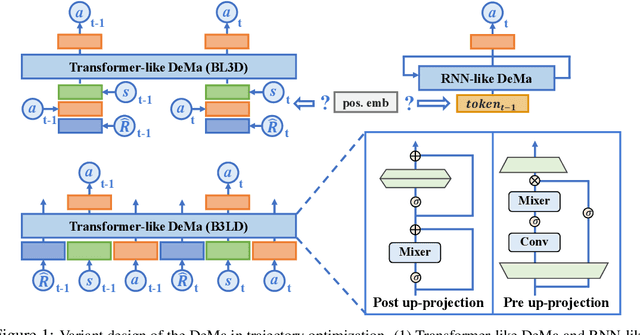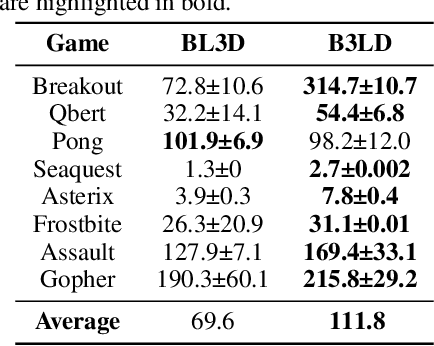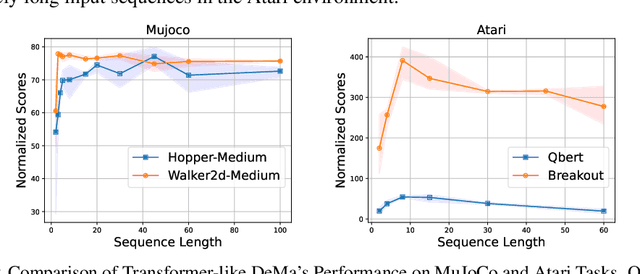Yang Dai
TrojanTO: Action-Level Backdoor Attacks against Trajectory Optimization Models
Jun 15, 2025Abstract:Recent advances in Trajectory Optimization (TO) models have achieved remarkable success in offline reinforcement learning. However, their vulnerabilities against backdoor attacks are poorly understood. We find that existing backdoor attacks in reinforcement learning are based on reward manipulation, which are largely ineffective against the TO model due to its inherent sequence modeling nature. Moreover, the complexities introduced by high-dimensional action spaces further compound the challenge of action manipulation. To address these gaps, we propose TrojanTO, the first action-level backdoor attack against TO models. TrojanTO employs alternating training to enhance the connection between triggers and target actions for attack effectiveness. To improve attack stealth, it utilizes precise poisoning via trajectory filtering for normal performance and batch poisoning for trigger consistency. Extensive evaluations demonstrate that TrojanTO effectively implants backdoor attacks across diverse tasks and attack objectives with a low attack budget (0.3\% of trajectories). Furthermore, TrojanTO exhibits broad applicability to DT, GDT, and DC, underscoring its scalability across diverse TO model architectures.
SOYO: A Tuning-Free Approach for Video Style Morphing via Style-Adaptive Interpolation in Diffusion Models
Mar 10, 2025Abstract:Diffusion models have achieved remarkable progress in image and video stylization. However, most existing methods focus on single-style transfer, while video stylization involving multiple styles necessitates seamless transitions between them. We refer to this smooth style transition between video frames as video style morphing. Current approaches often generate stylized video frames with discontinuous structures and abrupt style changes when handling such transitions. To address these limitations, we introduce SOYO, a novel diffusion-based framework for video style morphing. Our method employs a pre-trained text-to-image diffusion model without fine-tuning, combining attention injection and AdaIN to preserve structural consistency and enable smooth style transitions across video frames. Moreover, we notice that applying linear equidistant interpolation directly induces imbalanced style morphing. To harmonize across video frames, we propose a novel adaptive sampling scheduler operating between two style images. Extensive experiments demonstrate that SOYO outperforms existing methods in open-domain video style morphing, better preserving the structural coherence of video frames while achieving stable and smooth style transitions.
UNIDOOR: A Universal Framework for Action-Level Backdoor Attacks in Deep Reinforcement Learning
Jan 26, 2025



Abstract:Deep reinforcement learning (DRL) is widely applied to safety-critical decision-making scenarios. However, DRL is vulnerable to backdoor attacks, especially action-level backdoors, which pose significant threats through precise manipulation and flexible activation, risking outcomes like vehicle collisions or drone crashes. The key distinction of action-level backdoors lies in the utilization of the backdoor reward function to associate triggers with target actions. Nevertheless, existing studies typically rely on backdoor reward functions with fixed values or conditional flipping, which lack universality across diverse DRL tasks and backdoor designs, resulting in fluctuations or even failure in practice. This paper proposes the first universal action-level backdoor attack framework, called UNIDOOR, which enables adaptive exploration of backdoor reward functions through performance monitoring, eliminating the reliance on expert knowledge and grid search. We highlight that action tampering serves as a crucial component of action-level backdoor attacks in continuous action scenarios, as it addresses attack failures caused by low-frequency target actions. Extensive evaluations demonstrate that UNIDOOR significantly enhances the attack performance of action-level backdoors, showcasing its universality across diverse attack scenarios, including single/multiple agents, single/multiple backdoors, discrete/continuous action spaces, and sparse/dense reward signals. Furthermore, visualization results encompassing state distribution, neuron activation, and animations demonstrate the stealthiness of UNIDOOR. The source code of UNIDOOR can be found at https://github.com/maoubo/UNIDOOR.
Prediction of Lung Metastasis from Hepatocellular Carcinoma using the SEER Database
Jan 20, 2025Abstract:Hepatocellular carcinoma (HCC) is a leading cause of cancer-related mortality, with lung metastases being the most common site of distant spread and significantly worsening prognosis. Despite the growing availability of clinical and demographic data, predictive models for lung metastasis in HCC remain limited in scope and clinical applicability. In this study, we develop and validate an end-to-end machine learning pipeline using data from the Surveillance, Epidemiology, and End Results (SEER) database. We evaluated three machine learning models (Random Forest, XGBoost, and Logistic Regression) alongside a multilayer perceptron (MLP) neural network. Our models achieved high AUROC values and recall, with the Random Forest and MLP models demonstrating the best overall performance (AUROC = 0.82). However, the low precision across models highlights the challenges of accurately predicting positive cases. To address these limitations, we developed a custom loss function incorporating recall optimization, enabling the MLP model to achieve the highest sensitivity. An ensemble approach further improved overall recall by leveraging the strengths of individual models. Feature importance analysis revealed key predictors such as surgery status, tumor staging, and follow up duration, emphasizing the relevance of clinical interventions and disease progression in metastasis prediction. While this study demonstrates the potential of machine learning for identifying high-risk patients, limitations include reliance on imbalanced datasets, incomplete feature annotations, and the low precision of predictions. Future work should leverage the expanding SEER dataset, improve data imputation techniques, and explore advanced pre-trained models to enhance predictive accuracy and clinical utility.
MAKIMA: Tuning-free Multi-Attribute Open-domain Video Editing via Mask-Guided Attention Modulation
Dec 28, 2024



Abstract:Diffusion-based text-to-image (T2I) models have demonstrated remarkable results in global video editing tasks. However, their focus is primarily on global video modifications, and achieving desired attribute-specific changes remains a challenging task, specifically in multi-attribute editing (MAE) in video. Contemporary video editing approaches either require extensive fine-tuning or rely on additional networks (such as ControlNet) for modeling multi-object appearances, yet they remain in their infancy, offering only coarse-grained MAE solutions. In this paper, we present MAKIMA, a tuning-free MAE framework built upon pretrained T2I models for open-domain video editing. Our approach preserves video structure and appearance information by incorporating attention maps and features from the inversion process during denoising. To facilitate precise editing of multiple attributes, we introduce mask-guided attention modulation, enhancing correlations between spatially corresponding tokens and suppressing cross-attribute interference in both self-attention and cross-attention layers. To balance video frame generation quality and efficiency, we implement consistent feature propagation, which generates frame sequences by editing keyframes and propagating their features throughout the sequence. Extensive experiments demonstrate that MAKIMA outperforms existing baselines in open-domain multi-attribute video editing tasks, achieving superior results in both editing accuracy and temporal consistency while maintaining computational efficiency.
TeamLoRA: Boosting Low-Rank Adaptation with Expert Collaboration and Competition
Aug 19, 2024



Abstract:While Parameter-Efficient Fine-Tuning (PEFT) methods like LoRA have effectively addressed GPU memory constraints during fine-tuning, their performance often falls short, especially in multidimensional task scenarios. To address this issue, one straightforward solution is to introduce task-specific LoRA modules as domain experts, leveraging the modeling of multiple experts' capabilities and thus enhancing the general capability of multi-task learning. Despite promising, these additional components often add complexity to the training and inference process, contravening the efficient characterization of PEFT designed for. Considering this, we introduce an innovative PEFT method, TeamLoRA, consisting of a collaboration and competition module for experts, and thus achieving the right balance of effectiveness and efficiency: (i) For collaboration, a novel knowledge-sharing and -organizing mechanism is devised to appropriately reduce the scale of matrix operations, thereby boosting the training and inference speed. (ii) For competition, we propose leveraging a game-theoretic interaction mechanism for experts, encouraging experts to transfer their domain-specific knowledge while facing diverse downstream tasks, and thus enhancing the performance. By doing so, TeamLoRA elegantly connects the experts as a "Team" with internal collaboration and competition, enabling a faster and more accurate PEFT paradigm for multi-task learning. To validate the superiority of TeamLoRA, we curate a comprehensive multi-task evaluation(CME) benchmark to thoroughly assess the capability of multi-task learning. Experiments conducted on our CME and other benchmarks indicate the effectiveness and efficiency of TeamLoRA. Our project is available at https://github.com/Lin-Tianwei/TeamLoRA.
Is Mamba Compatible with Trajectory Optimization in Offline Reinforcement Learning?
May 20, 2024



Abstract:Transformer-based trajectory optimization methods have demonstrated exceptional performance in offline Reinforcement Learning (offline RL), yet it poses challenges due to substantial parameter size and limited scalability, which is particularly critical in sequential decision-making scenarios where resources are constrained such as in robots and drones with limited computational power. Mamba, a promising new linear-time sequence model, offers performance on par with transformers while delivering substantially fewer parameters on long sequences. As it remains unclear whether Mamba is compatible with trajectory optimization, this work aims to conduct comprehensive experiments to explore the potential of Decision Mamba in offline RL (dubbed DeMa) from the aspect of data structures and network architectures with the following insights: (1) Long sequences impose a significant computational burden without contributing to performance improvements due to the fact that DeMa's focus on sequences diminishes approximately exponentially. Consequently, we introduce a Transformer-like DeMa as opposed to an RNN-like DeMa. (2) For the components of DeMa, we identify that the hidden attention mechanism is key to its success, which can also work well with other residual structures and does not require position embedding. Extensive evaluations from eight Atari games demonstrate that our specially designed DeMa is compatible with trajectory optimization and surpasses previous state-of-the-art methods, outdoing Decision Transformer (DT) by 80\% with 30\% fewer parameters, and exceeds DT in MuJoCo with only a quarter of the parameters.
SUB-PLAY: Adversarial Policies against Partially Observed Multi-Agent Reinforcement Learning Systems
Feb 06, 2024Abstract:Recent advances in multi-agent reinforcement learning (MARL) have opened up vast application prospects, including swarm control of drones, collaborative manipulation by robotic arms, and multi-target encirclement. However, potential security threats during the MARL deployment need more attention and thorough investigation. Recent researches reveal that an attacker can rapidly exploit the victim's vulnerabilities and generate adversarial policies, leading to the victim's failure in specific tasks. For example, reducing the winning rate of a superhuman-level Go AI to around 20%. They predominantly focus on two-player competitive environments, assuming attackers possess complete global state observation. In this study, we unveil, for the first time, the capability of attackers to generate adversarial policies even when restricted to partial observations of the victims in multi-agent competitive environments. Specifically, we propose a novel black-box attack (SUB-PLAY), which incorporates the concept of constructing multiple subgames to mitigate the impact of partial observability and suggests the sharing of transitions among subpolicies to improve the exploitative ability of attackers. Extensive evaluations demonstrate the effectiveness of SUB-PLAY under three typical partial observability limitations. Visualization results indicate that adversarial policies induce significantly different activations of the victims' policy networks. Furthermore, we evaluate three potential defenses aimed at exploring ways to mitigate security threats posed by adversarial policies, providing constructive recommendations for deploying MARL in competitive environments.
Information retrieval in single cell chromatin analysis using TF-IDF transformation methods
Dec 10, 2022Abstract:Single-cell sequencing assay for transposase-accessible chromatin (scATAC-seq) assesses genome-wide chromatin accessibility in thousands of cells to reveal regulatory landscapes in high resolutions. However, the analysis presents challenges due to the high dimensionality and sparsity of the data. Several methods have been developed, including transformation techniques of term-frequency inverse-document frequency (TF-IDF), dimension reduction methods such as singular value decomposition (SVD), factor analysis, and autoencoders. Yet, a comprehensive study on the mentioned methods has not been fully performed. It is not clear what is the best practice when analyzing scATAC-seq data. We compared several scenarios for transformation and dimension reduction as well as the SVD-based feature analysis to investigate potential enhancements in scATAC-seq information retrieval. Additionally, we investigate if autoencoders benefit from the TF-IDF transformation. Our results reveal that the TF-IDF transformation generally leads to improved clustering and biologically relevant feature extraction.
Reference-Aided Part-Aligned Feature Disentangling for Video Person Re-Identification
Mar 21, 2021



Abstract:Recently, video-based person re-identification (re-ID) has drawn increasing attention in compute vision community because of its practical application prospects. Due to the inaccurate person detections and pose changes, pedestrian misalignment significantly increases the difficulty of feature extraction and matching. To address this problem, in this paper, we propose a \textbf{R}eference-\textbf{A}ided \textbf{P}art-\textbf{A}ligned (\textbf{RAPA}) framework to disentangle robust features of different parts. Firstly, in order to obtain better references between different videos, a pose-based reference feature learning module is introduced. Secondly, an effective relation-based part feature disentangling module is explored to align frames within each video. By means of using both modules, the informative parts of pedestrian in videos are well aligned and more discriminative feature representation is generated. Comprehensive experiments on three widely-used benchmarks, i.e. iLIDS-VID, PRID-2011 and MARS datasets verify the effectiveness of the proposed framework. Our code will be made publicly available.
 Add to Chrome
Add to Chrome Add to Firefox
Add to Firefox Add to Edge
Add to Edge